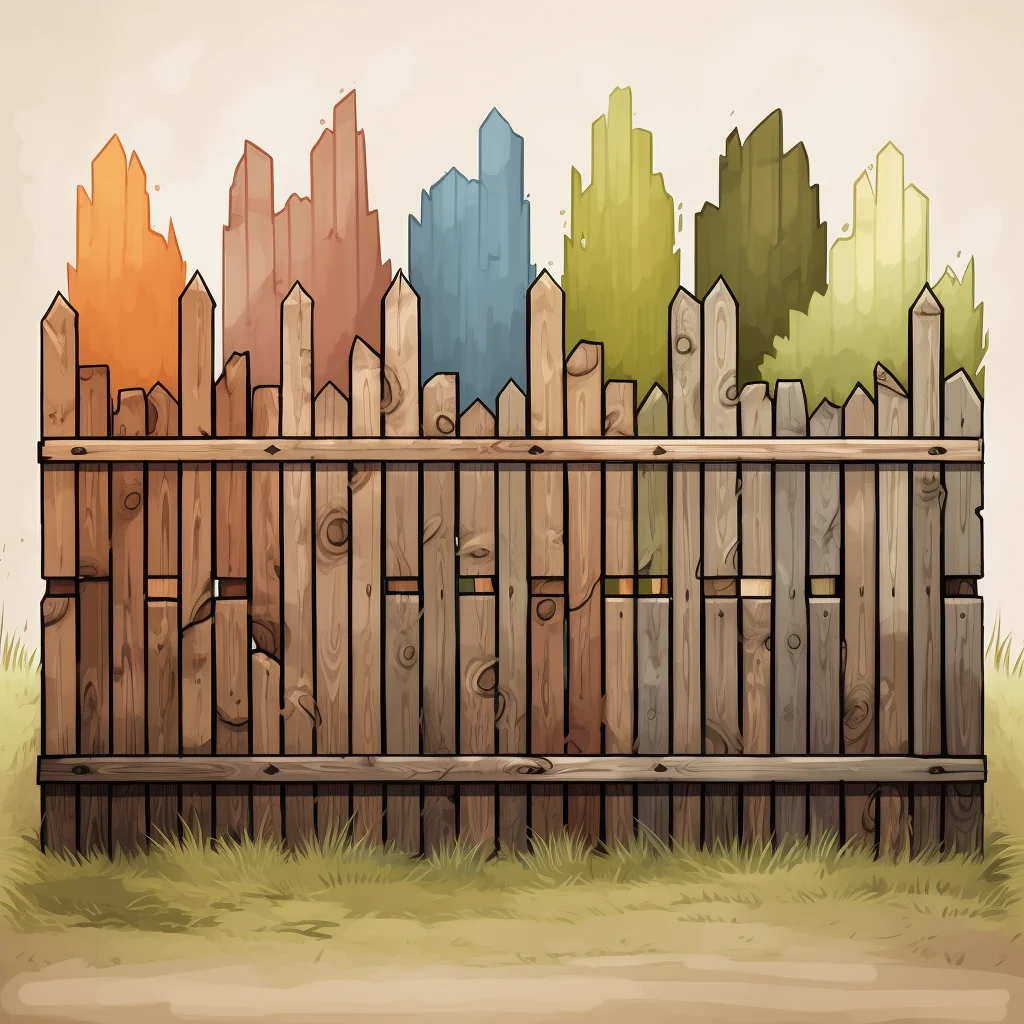Fences And Boundaries: A Comprehensive Guide
- Obligation to Fence One’s Land
- Legal obligations and specific situations
- Property deeds and fencing mandates
- Personal safety and pet containment
- Determining Fence Responsibility
- Original land seller’s responsibility
- Property deed and Seller’s Property Information Form
- Frequently Asked Questions
- Neighbor’s Fence Maintenance
- Persuading neighbors and legal obligations
- Erecting personal fences
- Fence Height Regulations
- Local planning policies and typical heights
- Fence Ownership
- Common misconceptions and property deeds
- Fence Appearance
- Orientation, style, and color choices
- Using Fences as Supports
- Hanging items and supporting plants
- Addressing an Unsightly Fence
- Alterations and concealment methods
- Reducing Fence Height
- Local height regulations and garden shadows
- Determining Fence Age
- Invoices, photos, aerial photographs, and dendrochronology
- Neighbor’s Fence Maintenance
- Fences, Boundaries, and Adverse Possession
- Fence replacements and boundary shifts
- Vague boundary descriptions in deeds
- Adverse possession arguments
- Confusion Arising from Replacement Fences
- Boundary position, fence placement, maintenance responsibility, and ownership
- Scenarios involving landowners and property boundaries
- The pensioner’s deteriorating fence and the compassionate neighbor
- Three potential outcomes of fence replacement
- Implications for new property owners and boundary disputes
Obligation to Fence One’s Land: While many properties have fences, there’s no universal legal obligation to fence one’s land. However, specific situations, like proximity to railways (Railways Consolidation Act 1845), abandoned mines (Mines and Quarries Act 1954), construction sites near highways (Highways Act 1980), and containing livestock (Animals Act 1971), necessitate fencing. Some property deeds might also mandate fence erection and maintenance. For personal safety and pet containment, many homeowners opt for fencing.
Determining Fence Responsibility: The responsibility usually lies with the original land seller during land subdivision and sale. This information is often in the property deed. If not, the Seller’s Property Information Form might clarify.
Frequently Asked Questions:
- Neighbour’s Fence Maintenance: If you’re pondering how to convince your neighbour to mend their fence, the truth is you probably can’t. It’s their fence, and they can let it deteriorate if they choose. There’s no overarching legal obligation for them to fence their boundaries. Instead of hiring an expert to persuade your neighbour, think about erecting your own fence next to theirs.
- Fence Height Regulations: Fence heights are governed by local planning policies. Typically, rear garden fences can be up to 2 meters high. Consult your local authority for specifics.
- Fence Ownership: A widespread misconception is that homeowners own the fence to their property’s left when viewed from the street. However, boundary fence responsibility is determined by the original land seller. This information is usually in the property deed. If the deeds are unclear, the Seller’s Property Information Form might provide insights.
- Fence Appearance: There’s no law dictating the smooth side of a fence to face a specific direction. If your neighbour funds a fence they erect on their land, they can decide its style, color, and orientation.
- Using Fences as Supports: You can only hang items or use your neighbour’s fence to support plants with their explicit consent. Unauthorized use can lead to damages, for which you might be liable.
- Addressing an Unsightly Fence: You can’t alter your neighbour’s fence without their consent. However, you can plant free-standing shrubs or erect your own fence to hide it.
- Reducing Fence Height: If your neighbour’s fence adheres to local height regulations, there’s little you can do, even if it casts a shadow over your garden.
- Determining Fence Age: To determine your wooden fence’s age, invoices from fencing contractors or family photos showcasing the fence can help. Aerial photographs or dendrochronology might also be useful, though they have limitations.
Fences, Boundaries, and Adverse Possession: Over the years, especially with older properties, fences might have been replaced multiple times, potentially leading to shifts in boundaries. Given some deeds’ vague boundary descriptions, fences might have been slightly relocated over time. Adverse possession can be a valid argument for small strips of land along disputed boundaries.
Confusion Arising from Replacement Fences:
At times, the erection of a replacement fence can lead to confusion regarding several aspects:
- The actual position of the boundary.
- The placement of the fence.
- Who holds the responsibility for the boundary’s maintenance.
- The ownership of the fence.
Consider this: It’s entirely feasible for one landowner to set up a fence on another landowner’s property, yet the fence’s ownership remains with the first landowner. This is akin to Mr. A parking his car on Mr. B’s property; the car still belongs to Mr. A.
Picture a scenario where a pensioner, with limited financial means, has resided in the same house for many years. The wooden fence, which the pensioner is accountable for, is deteriorating, posing both an aesthetic and safety concern for the neighbor. This neighbor, being compassionate, decides to replace the fence at his own expense, even though he isn’t obligated to do so. The implications of this act depend on the fence’s placement and the subsequent perceptions of both parties and their heirs.
Three potential outcomes can arise:
- The new fence is erected on the neighbor’s side, replacing the old one. The neighbor ensures the pensioner understands that the new fence is neither on the pensioner’s land nor owned by them.
- The old fence is removed, and the new one is set up in its exact position. The new fence is then gifted to the pensioner.
- The old fence is taken down, and the new one is placed in the same spot. However, no clarification is provided to the pensioner about the fence’s position or ownership.
Fast forward to a time when both properties have changed hands. The new owners are puzzled about the boundary’s exact location. Upon investigation, they learn about the circumstances surrounding the pensioner’s fence replacement.
If they find out the first scenario took place, they’d conclude that the boundary is on the pensioner’s side of the fence erected by the neighbor. If the second scenario is what transpired, they’d deduce that the boundary is on the neighbor’s side of the fence, which now belongs to the pensioner’s heir. In the case of the third scenario, they’d have to choose between honoring the original boundary (on the neighbor’s side) or accepting that the fence belongs to the neighbor’s heir, given that enough time has passed for the boundary to shift due to adverse possession to the pensioner’s side.
Note: This article is intended for informational purposes only and does not constitute legal advice. Always consult with a legal professional before taking any action.

